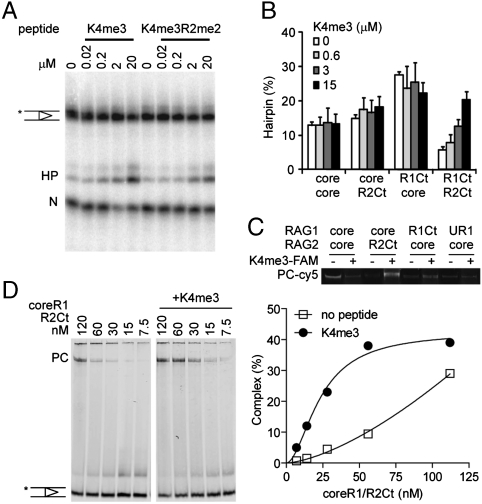Fig. 5.
Rescue of PHD-mediated inhibition of complex formation and hairpin formation with H3K4me3 peptide. (A) Addition of varying concentrations of H3K4me3 and H3K4(me3)R2(me2) peptide to the cleavage reactions (containing 10 nM RAG1Ct/RAG2Ct) rescued PHD inhibition of hairpin formation in a dose-dependent manner. (B) Summary of H3K4me3 titration on other RAG1/RAG2 combinations, average from 4 experiments (+SD error bars). (C) Qualitative assessment of peptide binding to paired complex. Fluorescent labeled peptide colocalized with the stable 12/23 complex formed with cy5 labeled 12RSS. (D) 2 μM H3K4me3 stabilized the precleavage complex formed with the RAG1/RAG2-PHD combinations (concentrations in nM). The amount of complex is expressed as a percentage of total substrate in each lane. Binding curve of the substrate binding +/- peptide is displayed.

